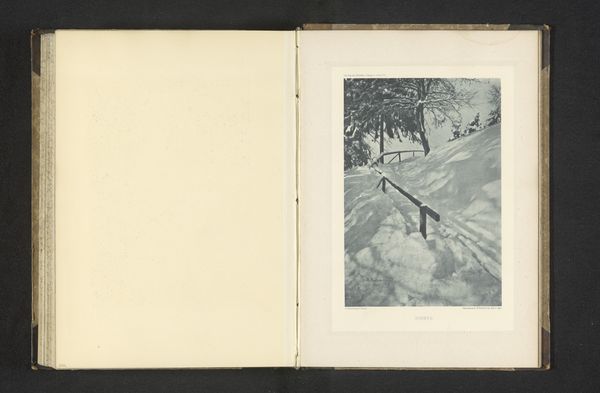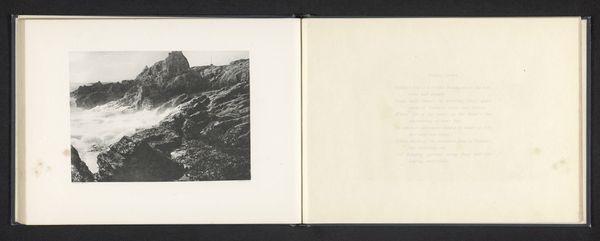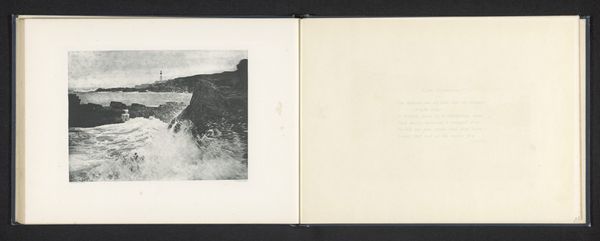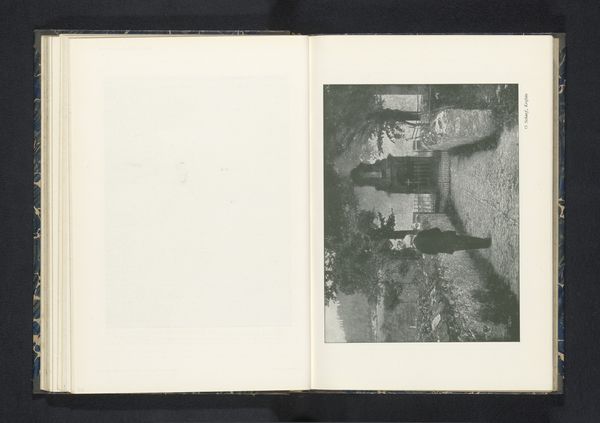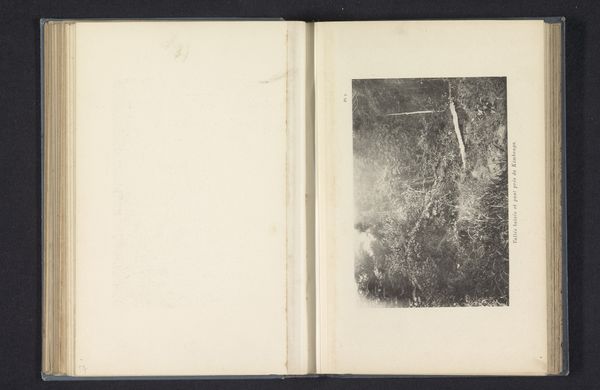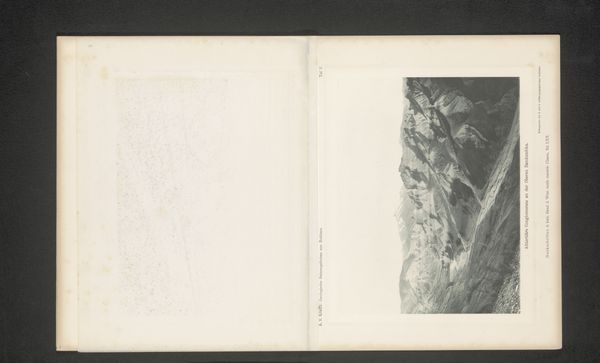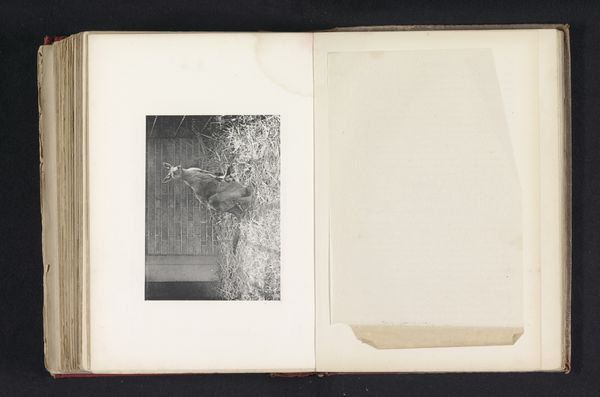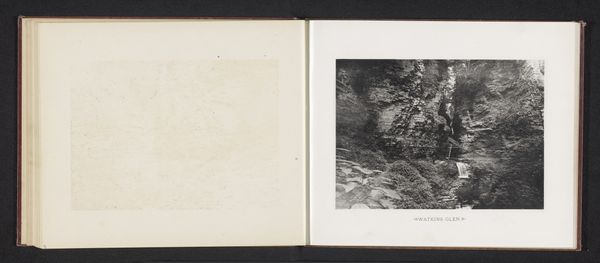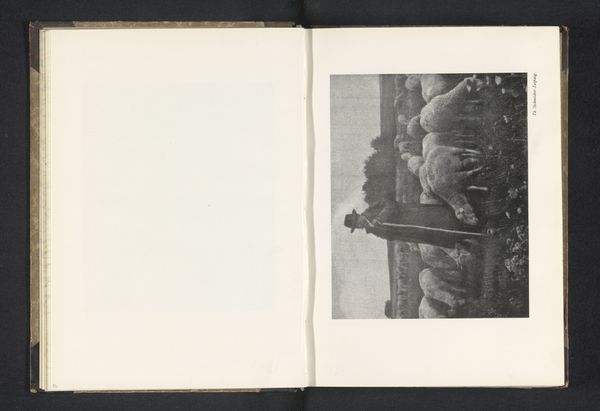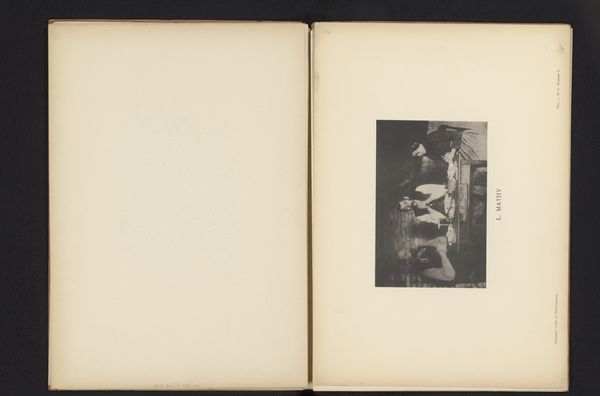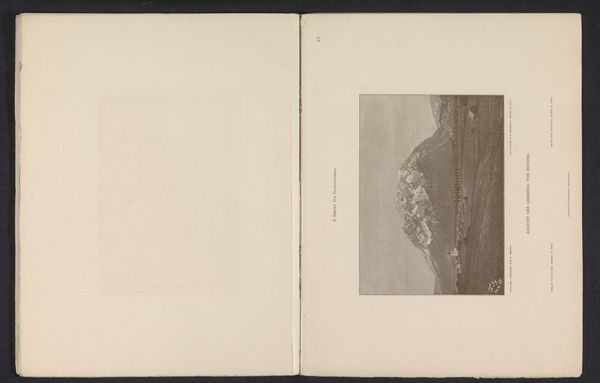
photography, gelatin-silver-print
#
portrait
#
landscape
#
photography
#
orientalism
#
gelatin-silver-print
Dimensions: height 124 mm, width 188 mm
Copyright: Rijks Museum: Open Domain
Curator: This photograph, titled "Companions of the Bath," was captured around 1900 by Henry William Cave using a gelatin-silver print technique. What's your initial response to it? Editor: Stark. The contrast between the figures in the foreground and the rocky backdrop is quite striking, it creates a scene that's somehow both intimate and imposing. The setting is also unclear; are we viewing something private, or public? Curator: That's interesting, and a question Cave’s Orientalist style often prompts. He, like many of his contemporaries, utilized photography to depict life and landscapes within British India, largely for Western consumption. We need to examine how this kind of visual representation helped build perception around these lands. Editor: Exactly. Consider the power dynamic: a Western photographer framing this scene—a man and an ox in what appears to be a moment of shared activity. This framing inevitably impacts our understanding, bringing to light notions of "exoticism" and perhaps, even domination. What about the photograph itself? Curator: Cave’s choice of the gelatin-silver process gives the print a high level of detail and tonal range. It was commercially popular during the late 19th century. It's a reminder that photography at this time was very much entwined with colonial trade and exchange, enabling the circulation of these images across vast distances. The photographic materials needed to come from somewhere. Editor: Right. Looking at the marks and stains on the ox, almost like purposeful branding, it's unsettling. Also the almost staged presentation of subject and setting leaves us questioning the subjects and their representation in this foreign visual frame. Curator: By paying close attention to the process and materials, we gain a deeper understanding of photography’s historical role as a shaper and a documenter of human life. Editor: And recognizing that visual framing allows us to be more aware of our interpretation of subjects. Curator: Indeed. Editor: It allows for more discussion.
Comments
No comments
Be the first to comment and join the conversation on the ultimate creative platform.

